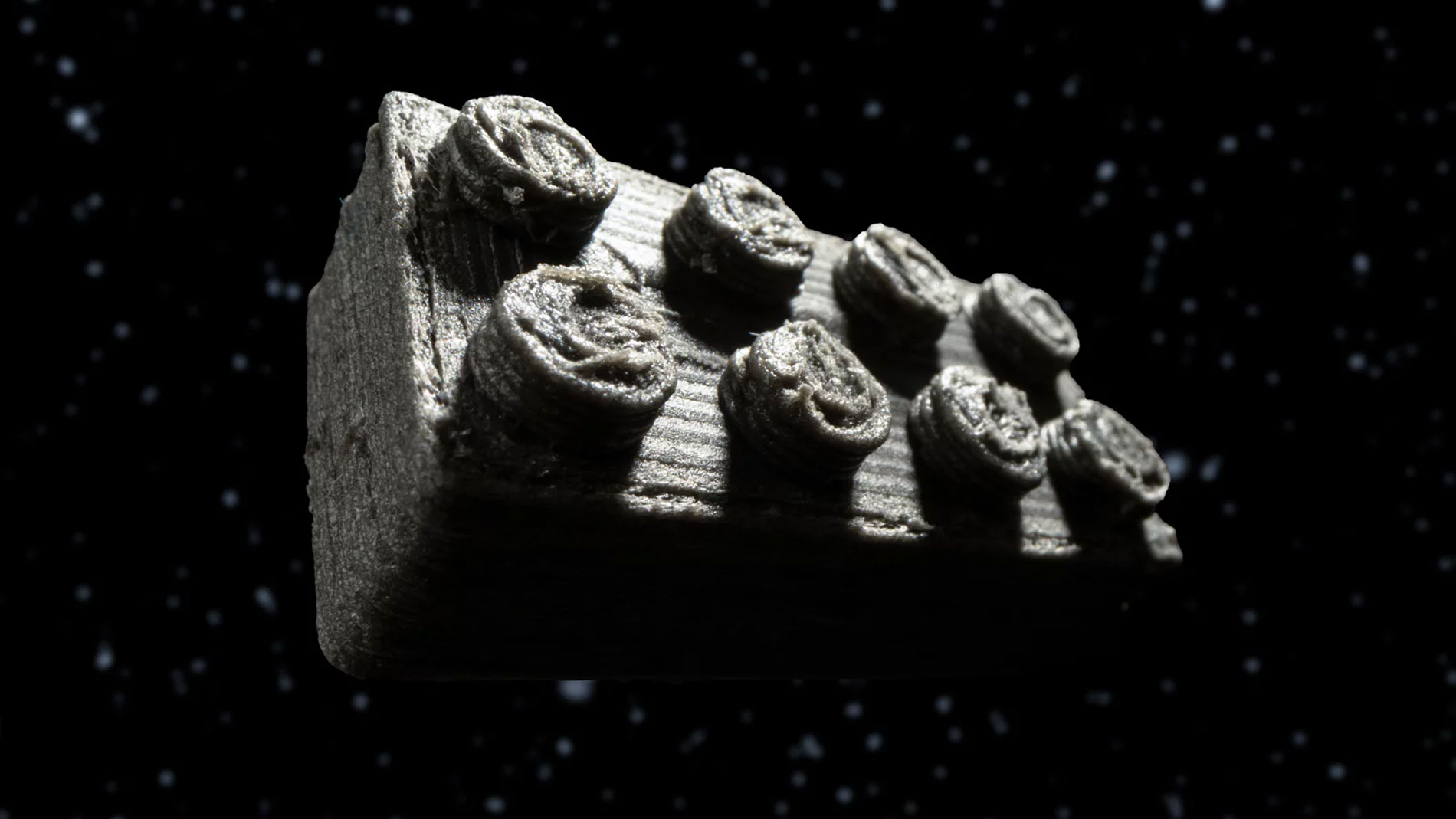29 June 2024
For the world-famous toy manufacturer Lego, space travel and celestial objects are a very important topic. “We recently found out that space remains an area of huge curiosity, with 87 percent of Gen Alpha kids interested in discovering new planets, stars, and galaxies,” explains Daniel Meehan, creative lead at the Lego Group. It’s thus hardly a coincidence that Lego occasionally collaborates with the European Space Agency (ESA). The ESA Space Shop was already the exclusive sales partner for a Lego ISS model a few years ago, and their latest joint project involves the 3D Printing of clamping bricks made from meteorite dust.

According to ESA, the project also has a scientific background: 3D Printing the small building elements, whose design is based on that of Lego bricks, is intended to help construct buildings and launch pads on the moon. As lunar dust is only available on Earth in the form of samples from the Apollo missions, a 4.5-billion-year-old meteorite found around 20 years ago in North Africa was used as an alternative. It is made of various space substances, including metals and chondrules (silicate globules). To make the material printable, it has been enriched with PLA plastic, among other things.
ESA wants to use the 3D-printed clamping components to test different construction methods for space. ESA science officer Aidan Cowley explains: “No one has ever built a structure on the moon, so we have to work out not only how we build them, but what we build them out of, as we can’t take any materials with us.” The 3D-printed clamping bricks made of meteorite dust turned out to have a slightly rougher surface than their plastic counterparts. “The result is amazing – importantly, the clutch power still works, enabling us to play and test our designs,” Cowley continues.

Fifteen of the bricks can be seen in various Lego stores and at Lego House in Billund, Denmark, until September 20. It remains to be seen whether this project will ultimately make buildings possible on the moon, or merely promote the sale of bricks on Earth. What it will certainly do, however, is inspire young researchers to take a closer look at the topic of space.
FURTHER INFORMATION:
Tags
- Materials
- Aviation and aerospace
